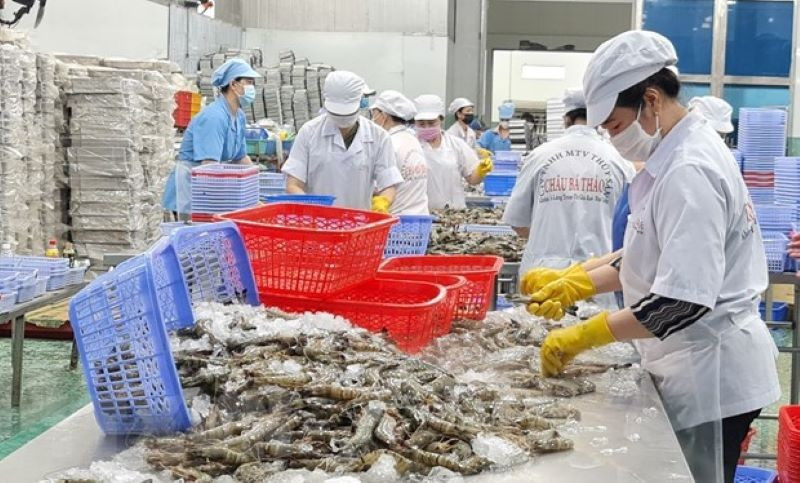A breakdown shows the export of agricultural goods brought in 2.32 billion USD, up 27%, while husbandry exports rose 35.6% to 45 million USD. Seafood exports fell by 15% to 800 million USD and forestry products dropped by 11% to 1.24 billion USD.
Total revenue in the first seven months of 2023 was estimated at 4.95 billion USD, down 25.4%. However, bright spots could be seen in the export of fruit and vegetables, rice, cashew nuts and coffee, with their respective revenues increasing by 68.1%, 29.6%, 9.8% and 6%.
During the January-July period, farming exports to Asian markets hit 14.06 billion USD, up 2.3%. China, the US and Japan remained the three biggest markets for Vietnamese farming exports.
According to MARD Deputy Minister Phung Duc Tien, the agricultural sector made great efforts to realise the targets amidst difficulties, as reflected in the data for the first months of the third quarter.
Commenting on the export target of 54-55 billion USD for 2023, the official said it can be fulfilled if the forestry and seafood sectors can regain their growth momentum in the remainder of the year.
He cited some optimistic signs such as a rebound in orders and rising purchasing power from major markets such as the US and the EU.
Tien added that forestry and seafood sectors have received special attention from the government, with Prime Minister Pham Minh Chinh having directed the State Bank of Vietnam to carry out a 15 trillion VND (631.7 million USD) credit package in April following a working session with VASEP and VIFOREST, the two associations representing enterprises in the two aforementioned sectors.
Accordingly, forestry and seafood businesses can enjoy lending rates that are at least 1-2 percentage points lower than the average rates. To date, 12 banks have applied for participation in the programme.
Deputy Minister Tien is confident that with the support of the government, the forestry and seafood sectors will be able to realise their respective export targets of 17 billion USD and 9-10 billion USD for the whole year.
He noted that the two sectors need to be more proactive in preparing feedstocks and securing orders to fully tap into opportunities when foreign markets rebound.
















